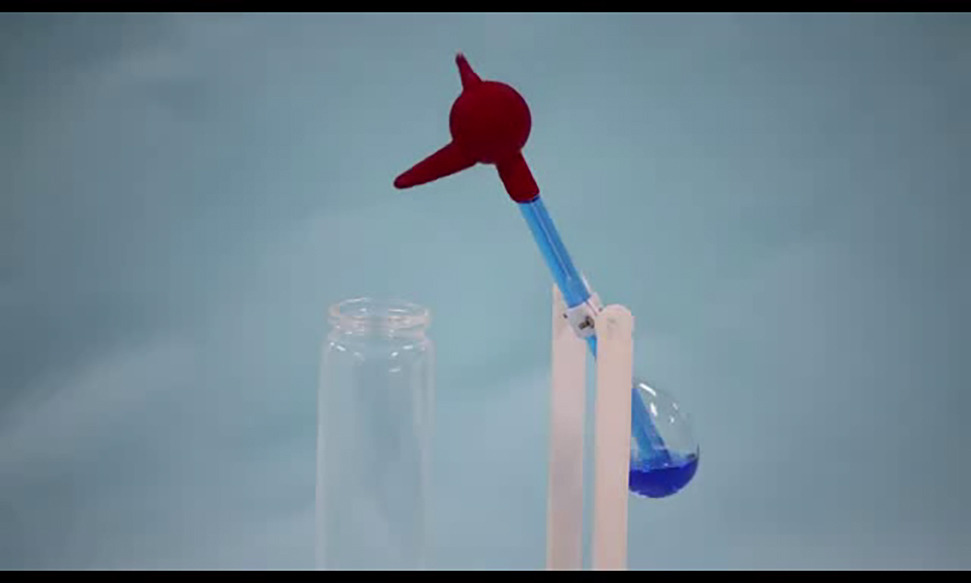News release
From:
An electricity generator inspired by the drinking bird toy powers electronics with evaporated water
Inspired by the classic drinking bird toy, scientists in Hong Kong and Guangzhou, China have developed an engine that efficiently converts energy from water evaporation into electricity to power small electronics. The device produces energy outputs exceeding 100 volts—much higher than other techniques that generate electricity from water—and can operate for several days using only 100 milliliters of water as fuel, according to a study published March 14 in the journal Device.
“The drinking bird triboelectric hydrovoltaic generator offers a unique means to power small electronics in ambient conditions, utilizing water as a readily available fuel source,” said Hao Wu, a professor at South China University of Technology and the first author of the study. “I still feel surprised and excited when witnessing the actual results.”
The drinking bird toy, also called a “dippy bird,” has been a fixture of science classrooms for decades. The toy consists of two glass bulbs connected by a glass tube with a highly volatile liquid, methylene chloride, stored within. The top bulb, which includes the bird’s beak and a decorative top hat, is covered in a felt-like material, and the bird’s body is suspended on two plastic legs. After the bird’s head is dipped in a glass of water, the water begins to evaporate. This results in a pressure difference that causes the fluid in the bottom bulb to rise through the tube until it fills the head, causing the bird to dip forward into the water to “take a drink” before the process starts again.
When Wu was a postdoc puzzling over how to create a greater voltage output from an evaporation energy generator, she remembered the drinking bird toy and was struck by the idea that it could be used as more than a tool to demonstrate a physics concept.
“I began to contemplate whether we could convert the evaporation energy into mechanical energy first, and then translate it into electricity,” said Wu. “It was then that the idea of utilizing the drinking bird toy came to mind. With this inspiration, the concept of the drinking bird triboelectric hydrovoltaic generator was born.”
To construct the generator, Wu and colleagues placed two triboelectric nanogenerator modules—which collect mechanical energy—on both sides of a drinking bird engine that they reconstructed from a commercial drinking bird toy. The researchers tested the prototype with a variety of small electronics, using it to power 20 liquid crystal displays (LCDs), temperature sensors, and calculators.
Overcoming friction that slowed down the generator was a major challenge in the study, said Wu. The researchers affixed patterned fibers as the charge transfer materials in the triboelectric nanogenerator modules, a strategy that helped to reduce friction and allowed the device to operate more smoothly.
In the next phase of their research, the team plans to design a new drinking bird instead of using a commercially available toy, with the goal of converting water evaporation to electrical energy more efficiently.
“Additionally, we will explore various application opportunities for this device with the ultimate aim of delivering a practical product that can be used in our daily lives,” said Wu.



 International
International



